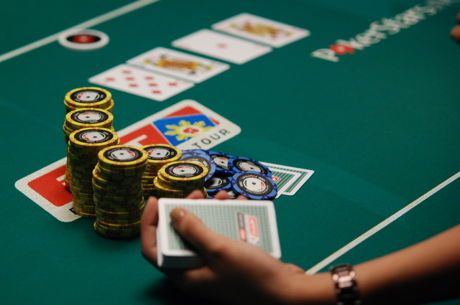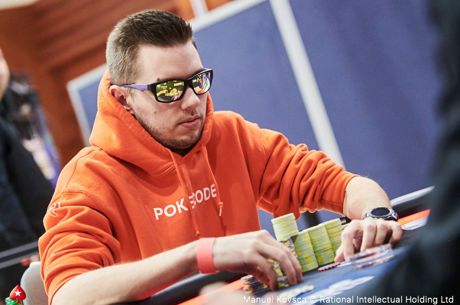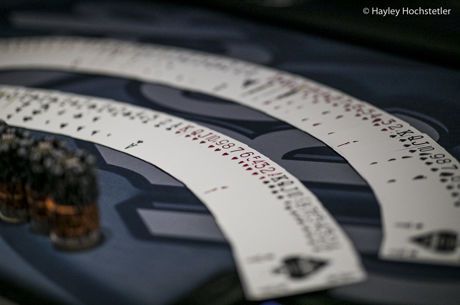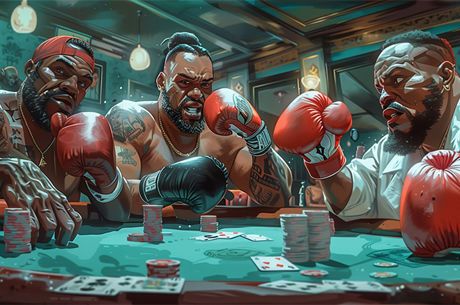Paying for Reads Early in Small Stakes Tournaments
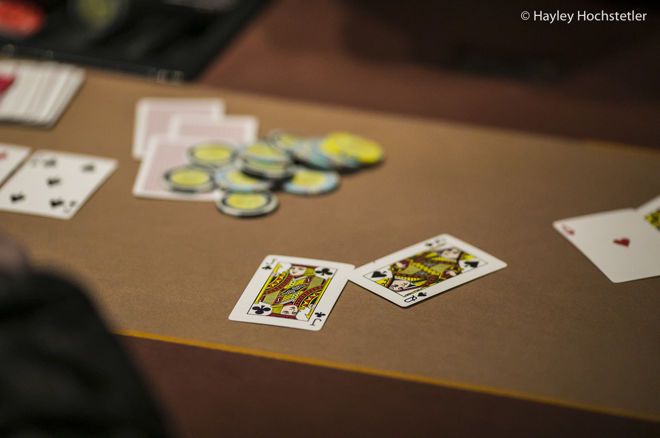
If you play small stakes poker tournaments, then your opponents make massive mistakes. Most likely, they play a preferred, easily exploitable strategy and are slow to adjust when you begin to take advantage of those mistakes. You probably already knew that, but there is a good chance you aren’t doing enough about it.
What if you knew their exact strategy? For example, what if you knew they always limp-called with marginal hands and folded on the river with less than top pair. Or that they always bluffed postflop whenever the preflop aggressor checked a street?
You could easily exploit this player by iso-raising with any two cards and betting three streets on good runouts with your bluffs or checking to induce with your bluff catchers. This would be an easy opponent to beat. This would also be an opponent against whom sticking to correct GTO ranges when playing them would leave a ton of money on the table.
Now what if you knew that such a player was in your game, but you didn’t know which one of your opponents played this way? Shouldn’t you go out of your way to identify this player as soon as possible?
The traditional way to do this is to pay attention to the hands that go to showdown, but this leaves it up to chance and the whims of the other players. Plus, most of us have the attention span of seventh graders and don't pay much attention to hands after we fold, anyway. Wouldn't it be easier to just pay someone else to get this valuable information for us?
That would be great, but of course, it is not allowed. However, there is a close alternative. You cannot pay for this information with money, but you can pay for it with chips.
This can be accomplished by playing more hands early in tournaments when the pots are less significant and taking passive lines to force showdowns, even if that means losing some expected value now and then for a small amount of chips. It is my belief that the information gained from these small early losses can more than pay for itself by allowing you later to make extreme hero folds and calls against the right kinds of opponents.
Getting the Information
The players most likely to make the big mistakes that we want to exploit in the later levels start off by making small mistakes in the early levels. These include things like open-limping, calling down too light, or bluffing with very little fold equity. Whenever we see players making these mistakes, we should go out of our way to see as many showdowns with them as possible.
The players most likely to make the big mistakes that we want to exploit in the later levels start off by making small mistakes in the early levels.
If a target player limps, I will consider iso-raising them with a wide variety of hands and using my position to force a showdown by checking back with marginal value hands or calling down with marginal bluff catchers. This works really well in heads-up pots when I have position. When I am out of position, I tend to use a slightly tighter range consisting of bigger cards that perform better as bluff catchers and check-call down.
The information gained from seeing showdowns in hands you have played is the most actionable information you can get in poker. It is better than showdown information obtained from hands involving other players because there may be some dynamic between the participants that you don't realize. It is also better than information from a HUD because aggregated information that doesn't contain hole card detail can be misleading, especially over small sample sizes.
A showdown in which I have participated will give me information on a player's likely range, bet sizing, timing, and aggression level. One or two showdowns like this can be more valuable than fifty non-showdown hands in a HUD.
Using the Information
Remember we are talking about small stakes tournaments, so we don't expect the average player to be balanced or very likely to change their strategy much. This means once we get the read, we can benefit from it in future hands when the stakes become much higher.
For example, I played a hand with an opponent where I opened from early position with K-Q-suited and he called in position. It felt like he had been doing this way more often than he should have, so I was eager to see a showdown with him.
Stacks were around 100 big blinds deep and there were no antes. The flop came A-3-3 rainbow and went check-check. The turn was a T. Many players in my shoes would take this as a good spot to bluff the opponent off of his small pairs or to get value from weaker gutters or flush draws, but I decided to just check-call so I could see his cards. The villain bet 1 BB into a 5 BB pot, and I called.
The river brought an offsuit 9, making the final board A-3-3-T-9. This time, villain bet 2 BB into a 7 BB pot. I called and he showed 4-3-offsuit. My river call was defensible because I had the nut no-pair hand and was getting a great price for a small percentage of my stack. But honestly, I may have called that bet with jack-high just to start developing a read on this player.
Honestly, I may have called that bet with jack-high just to start developing a read on this player.
Given how he had played up to this point, I wasn't too surprised to see his weak preflop holding, but I was shocked to see just how weak it was and how trappy he played postflop with a very strong hand. My assumption was that he didn't call with a hand that weak for its playability. He planned to bluff when he missed and eek out value or induce bluffs when he hit.
Several orbits later, I got a chance to make use of this information.
By this time, antes were in play and effective stacks were around 50 BBs. I opened from EP with A-T-suited and this same villain called in position. The flop came 9-8-3 rainbow. I check-called a bet with my two overs and backdoor flush and straight draws. The turn was an offsuit 7 and I check-called another bet. The river was a K, and this time villain bet pot.
Now given that he did not put in this much action before when he had the effective nuts, I did not expect him to be doing so now with a marginal one-pair hand. I know he has tons of air in his preflop range, so I called and won when he showed 5-4-suited for a busted gutter draw.
This is not a line I would ever dream of taking against the average small stakes player who is way too passive. But the chips I had lost in the earlier hand turned out to be a small price to pay for a read that more than paid for itself in this one by revealing the fact that this player did not play like the others.
Conclusion
I'd be remiss if I did not mention one more time that this approach to poker will do you no good against solid GTO-style players who balance their ranges. Nor will it work against good exploitive players who themselves can adjust their games in an effort to re-exploit you.
Fortunately for us small stakes tournament grinders, there are very few players like these in our games. Most of our opponents are recreational players who have developed a style that may work against the average player in the field, but which leaves them completely open to exploits from players thinking on the next level.
Humans are naturally creatures of habit. If they are not careful, their predictability can make them exploitable. Consider spending a few pennies to try and reverse-engineer their strategy early so that you can use the information to take their dollars later.

